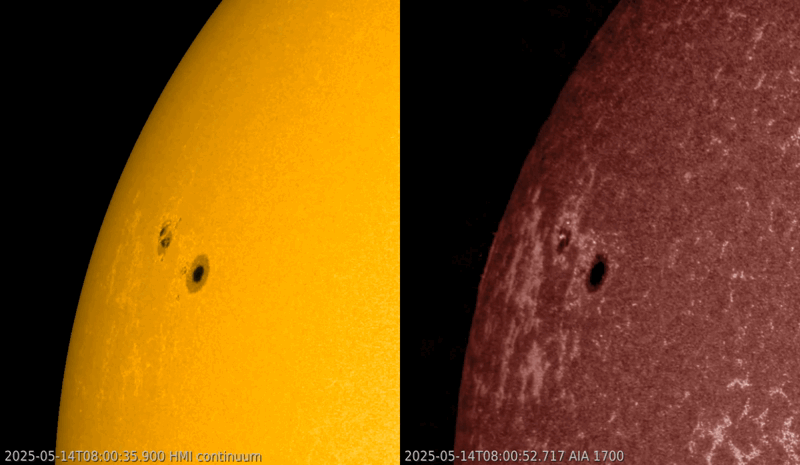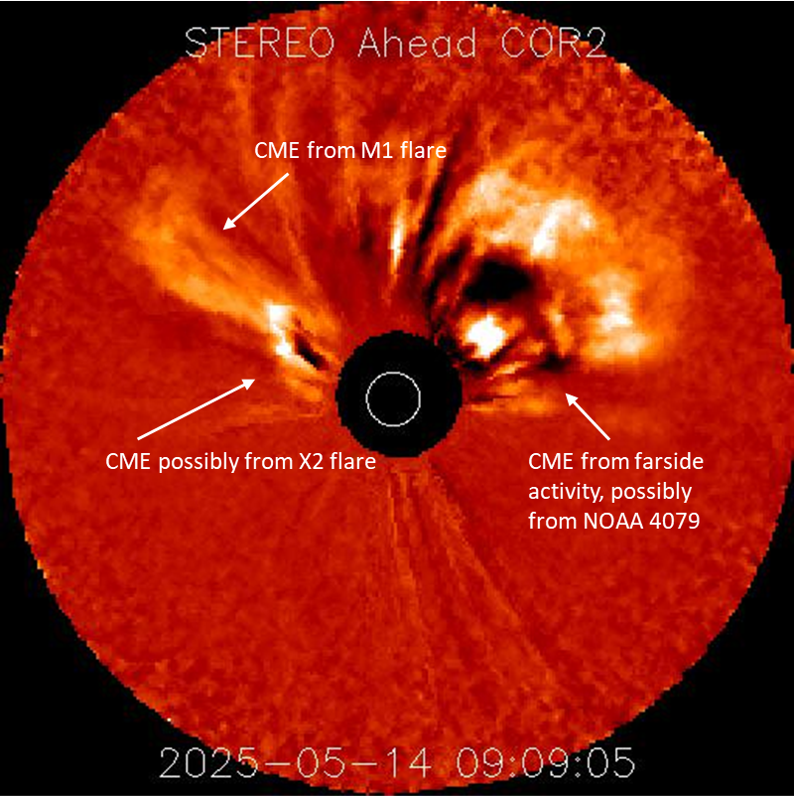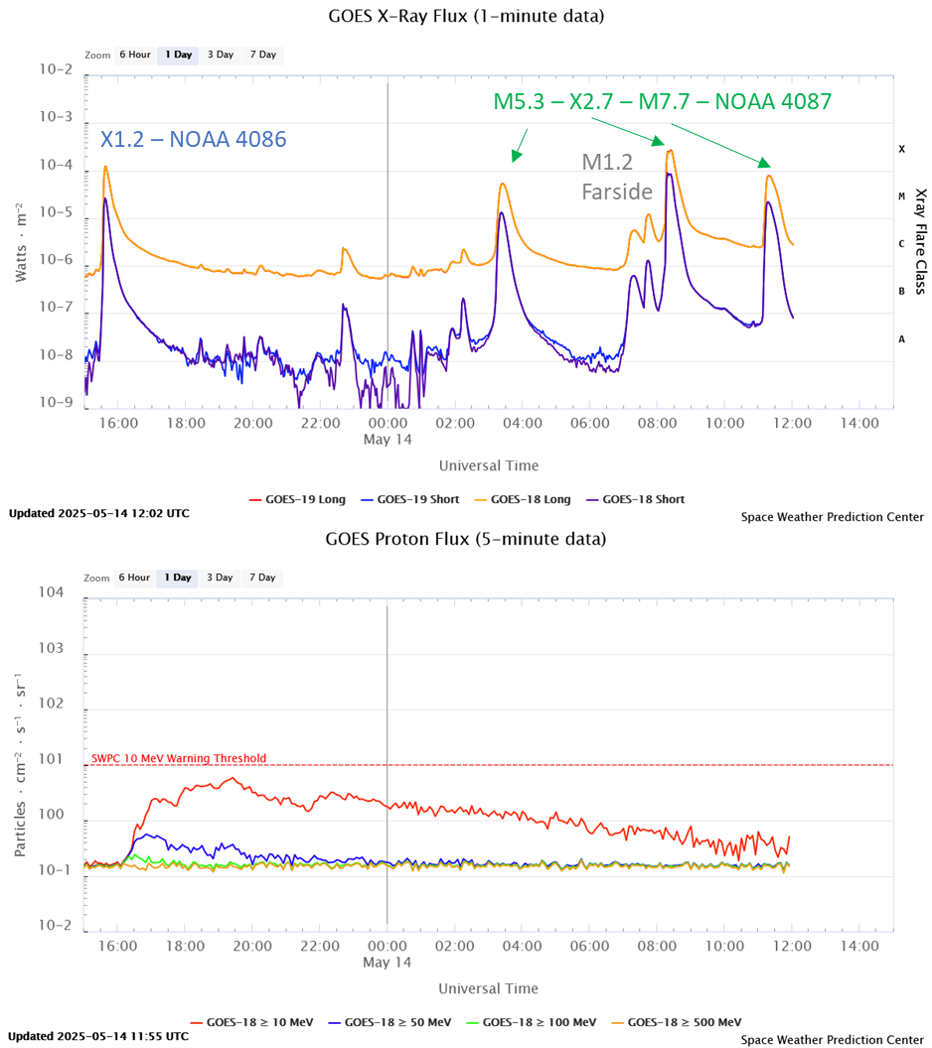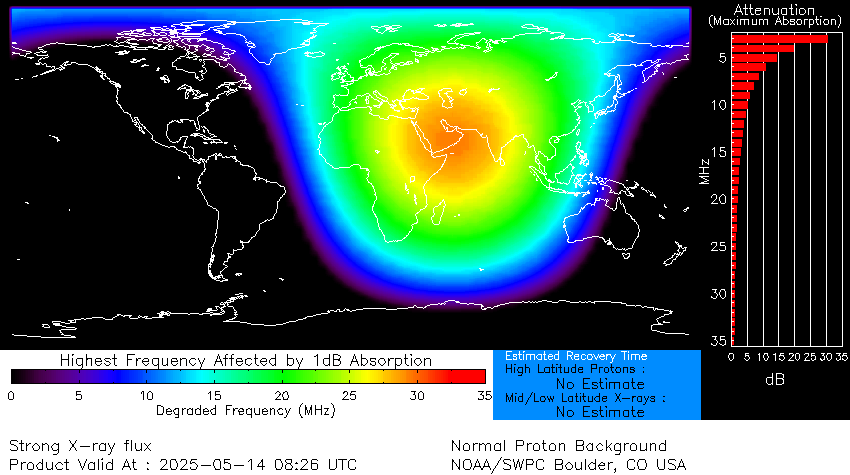Following yesterday's X1.2 flare by NOAA 4086 (see this STCE newsflash), an active region near the Sun's northeast limb became the driver of the solar activity. Starting early on 14 May, NOAA 4087 started to produce strong M-class flares as well as an X2.7 flare that peaked at 08:25UTC (GOES). This sunspot group consists of a large but simple and symmetrical main spot, and a smaller trailing portion that contains a strong magnetic delta structure. The SDO imagery first shows an extreme ultraviolet (EUV) clip of the activity so far today, with the blooming and diffraction patterns that can be seen in this clip being instrumental (more information is in Note 1 of this STCE newsitem). One of the eruptions, an M1.2 at 07:45UTC, originated from a source just behind the northeast limb and was not related to the ongoing activity in NOAA 4087 (SDO combo ; SUVI 304) . The next clip combines images in white light (HMI; left) and EUV (AIA1700; right) covering the X2 flare from 08:00-08:36UTC. This clip clearly shows the location of the flare in the trailing portion of NOAA 4087. For SDO, the flare was also visible for a few minutes in white light, but not very obvious (running difference image).


The radioastronomy station in Humain (Belgium) clearly shows a Type III radio burst, but no or at least not an obvious Type II radio burst. This can be seen in this radio spectrogram (Horizontal axis: time; vertical axis: frequency, with lowest values on top). STEREO-A imagery seems to show a not-so-wide coronal mass ejection (CME) on the heels of a CME related to the M1 flare. In the annotated coronagraphic image (STEREO-A/COR 2) underneath, the large CME to the right is related to farside solar activity, maybe associated with the old and large active region NOAA 4079. Because of the location of NOAA 4087, the bulk of the CME associated with the X2 flare is not directed to Earth, however a glancing blow can not be excluded at this time. Standing-by coronagraphic imagery and the analysis by the SIDC space weather forecaster.

The greater than 10 MeV proton flux which was enhanced following yesterday's X1 flare, did not reach the alert event threshold of 10 pfu (GOES) and is currently near background levels. So far, it has shown no response to the X2 flare from early this morning.The greater than 100 MeV and 500 MeV proton fluxes have stayed at background levels. Underneath is an annotated combo of flaring activity and the evolution of the proton flux over the last 24 hours. NOAA 4087 is now rotating further onto the solar disk. As long as the delta structure is present, further strong flaring can be expected from this active region. As the region approached the central meridian, any associated CME's may gradually become more directed towards the Earth.

The X-class flare affected the lower frequency portion of the High Frequency communication band (HF Com ; 3-30 MHz) mainly over Asia, Africa and Europe. An advisory to civil aviation has been issued (PECASUS/CRC). The effects of the X2 flare on HF Com can be seen in the two D-RAP maps underneath (NOAA/SWPC).






